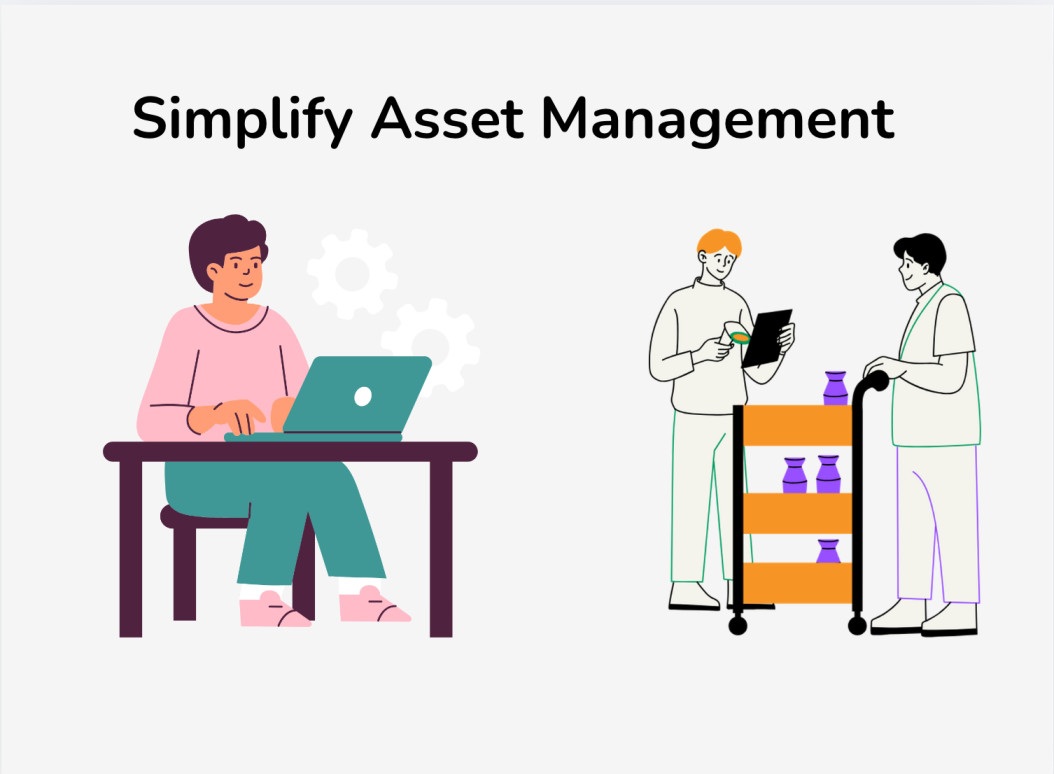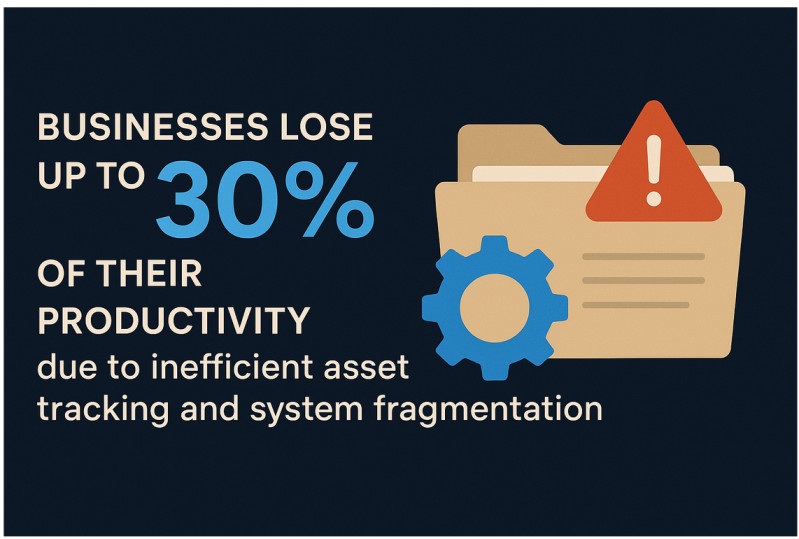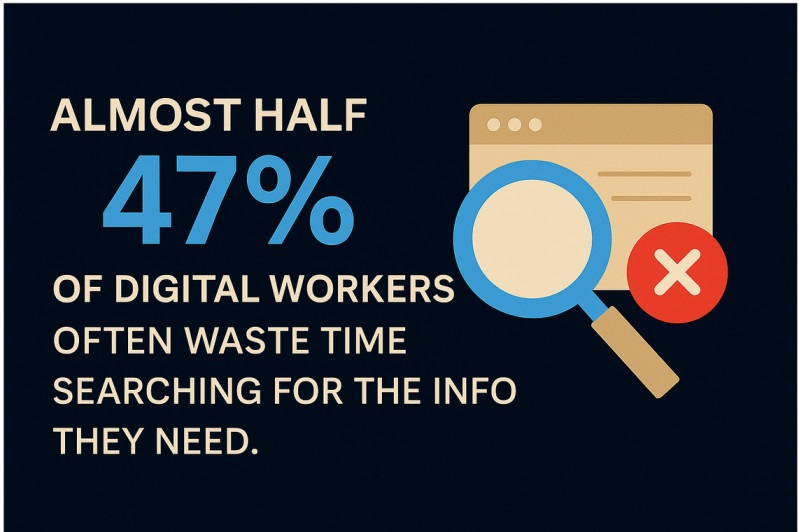Simplify Asset Management: The Shift That Saved 20 Hours/Week
Struggling to manage assets efficiently? Explore how you can simplify asset management, make asset tracking effortless, and save over 20 hours every week.
In this article:
- Key Takeaways
- The Hidden Costs of Complexity
- How to Simplify Asset Management in 4 Actionable Steps
- Step 1: Audit Your Current Tools and Workflows
- Step 2: Centralize Data and Remove Silos
- Step 3: Automate Repetitive Tasks
- Step 4: Train for Adoption, Not Just Installation
- Key Signs You Need to Simplify Asset Management System
- 1. More Time Is Spent Updating
- 2. Assets Frequently Go Missing
- 3. There’s No Single Source of Truth
- 4. Reporting Takes Days Instead of Minutes
- 5. Updates Still Happen Over Spreadsheets
- The Results of Simplifying Assets: What You Can Expect
- 1. Save 20+ Hours Per Week
- 2. 40% Faster Reporting
- 3. 25% Fewer Errors
- Need a Practical Way to Start? Itefy Makes It Easy.

Do you know that 43% of businesses fail because they fail to track their assets effectively? They get overwhelmed by the idea of using multiple tools and keeping track of their assets.
To avoid such a situation, we'll share how you can simplify asset management.
Simplification doesn't mean doing less; it's about making every step more efficient. You’ll discover what simplified asset management looks like, its benefits, and how to make the shift without disruptions.
Let's dive in.
Key Takeaways
- Hidden Costs: Complex systems consume time and lead to errors. If you're using complex tools, you're losing up to 30% in productivity due to inefficient tracking and fragmented tools.
- Time Savings: Automation of routine tasks can save 20 to 30 hours per week and reduce manual errors by at least 25%.
- Team Adoption: Training boosts success. Companies that train users effectively see up to 17% higher productivity and better long-term results.
- Centralized Control with Itefy: Managing everything in one platform like Itefy gives real-time visibility, improve accountability, and eliminates data silos.
The Hidden Costs of Complexity
Complexity in asset management doesn't always show up as a crisis. It shows up quietly through lost hours, slow decisions, and duplicated work. Even if your current system “works,” it may be costing you more than you think.
One of the biggest drains is time. Managing assets across multiple tools, spreadsheets, and manual updates eats up valuable hours.
Reports show that businesses lose up to 30% of their productivity due to inefficient asset tracking and system fragmentation.
Then there’s the issue of errors. Manual data entry increases the risk of mistakes. These include wrong asset locations, outdated inventory lists, or inaccurate depreciation values.

How to Simplify Asset Management in 4 Actionable Steps
Now that you know how much traditional asset management can cost you in time, accuracy, and productivity, it's time to make a change. Here is a four-step process to simplify asset management and achieve immediate results.
Step 1: Audit Your Current Tools and Workflows
Before you simplify asset management, you need to see what’s slowing you down. Start by listing all the tools and processes you currently use to track inventory. These include spreadsheets, apps, databases, emails, and even paper forms.
Ask simple questions like:
- Which tools are overlapping?
- What tasks are still manual?
- Where do delays usually happen?
Your primary focus is to identify repeating patterns. For example, if you're constantly sifting through multiple files and wasting hours just to find a single piece of information, that's a clear red flag.
According to a 2023 Gartner survey, 47% of employees face difficulties accessing the information they need to do their jobs efficiently. This audit gives you a clear starting point and helps you understand where simplification can have the greatest impact.

Step 2: Centralize Data and Remove Silos
Without centralized data, asset management becomes a reactive process. Every department works in its own bubble, updates get missed, and no one sees the whole picture.
The solution is to choose a single platform, like Itefy, where all asset information is stored, updated, and accessed in real-time. This involves replacing outdated tools or integrating systems into a single cloud-based solution.
When everyone uses the same dashboard, you unlock faster reporting, improved accountability, and easier compliance. Instead of wasting time reconciling data across systems, your team works with clarity and speed.
Step 3: Automate Repetitive Tasks

Manual processes are prone to errors. A report by IBM suggests that human error is the cause of 95% of IT and asset tracking failures. That's the biggest reason why automation is no longer optional if you really want to grow.
Start by identifying the most repetitive and time-consuming tasks in your workflow. Common examples include:
- Logging asset movement or status updates
- Scheduling maintenance or warranty checks
- Creating reports or alerting teams of upcoming events
Then, use automation to handle these tasks in the background. Set up triggers to automatically update asset records when a device is relocated or to send alerts when a license is nearing expiration. Even automating 2 to 3 core tasks can save your team dozens of hours each month.
Step 4: Train for Adoption, Not Just Installation
The final step is often the most overlooked one. You can simplify your system perfectly on paper, but if your team doesn't understand it or use it, nothing changes.
Training shouldn't be a one-time event. It should be built into your implementation process; for the best results, break these down into short, role-based sessions. Focus on how the system helps each user, not just what the software can do.
| Did you know? Companies that invest in customer training programs experience up to 17% higher productivity and a 218% increase in income per employee, according to the Devlin Peck report. |
Key Signs You Need to Simplify Asset Management System
If your asset management process is slowing down your team or causing confusion, it may be time for a change. Here are five clear signs that can help you identify inefficiencies and take action before they impact profitability.
1. More Time Is Spent Updating
A team spending most of their time entering data instead of focusing on it means there's something wrong with your methods. Asset management should support decisions, not delay them.
2. Assets Frequently Go Missing
Losing track of assets is a consequence of inconsistent updates and poor visibility. If assets are often unaccounted for, the system likely lacks structure.
3. There’s No Single Source of Truth
When different teams use different tools or spreadsheets, confusion follows. Errors increase, data becomes outdated, and no one knows what’s accurate or up to date.
4. Reporting Takes Days Instead of Minutes
Asset reporting should be fast, simple, and accurate. If it takes hours or days to gather the right data, your system isn’t working.
5. Updates Still Happen Over Spreadsheets
Are you still managing updates manually through email or Excel? It’s time to stop, because that process is now outdated. In reality, these tools were never meant for scalable asset tracking. Instead, use an equipment management software to lighten some of the workload off your shoulders and track everything without a headache.
The Results of Simplifying Assets: What You Can Expect
Once you simplify the asset management process, the benefits become clear. You’ll not only save time but also gain the visibility and control needed to make smarter decisions. Here’s what you can expect:
1. Save 20+ Hours Per Week
A digital transformation study reveals that teams can cut 60% to 80% of the time spent on inventory and reconciliation by automating routine tasks. That adds up to 20–30 hours saved every week, which your team can reinvest in higher-value work.
2. 40% Faster Reporting
In one case study, advanced analytics cut report generation time by 60%. Another found that streamlined workflows reduced cycle times by 50–70%. These improvements don’t just save time, they empower teams to act faster, with greater confidence in their data.
3. 25% Fewer Errors
Manual entry leads to inaccuracies. Studies show that 90-95% of tracking failures are tied to human error. Automating data capture and validation can cut those errors by a quarter or more.
Need a Practical Way to Start? Itefy Makes It Easy.
When your team is buried in manual updates, clunky spreadsheets, or lost equipment, you’re not just wasting time. You’re losing control.
That’s why now is the right moment to simplify asset management with Itefy.
Itefy helps you take control of your assets from the very start. You can track assets, schedule maintenance, manage check-outs, and see everything live from one dashboard.
Try Itefy on a 14-day free trial and see the difference yourself.
Frequently Asked Questions
-
Use a check-in/check-out system that tracks who last handled each asset. Label assets with QR or barcodes for faster logging. Automate overdue reminders and maintain location history. With these tools, you can prevent asset hoarding, improve accountability, and ensure every piece of equipment is traceable at all times.
-
Yes. Even small teams can struggle with missing tools, forgotten maintenance, or poor scheduling. When multiple people use shared items, tracking becomes crucial. Asset management systems reduce confusion, increase accountability, and prevent minor issues from growing.
-
Asset tracking only monitors the location of items and who has them. Asset management goes further; it includes scheduling maintenance, managing reservations, logging repairs, and analyzing usage. If tracking tells you where an asset is, management tells you everything about its lifecycle.
